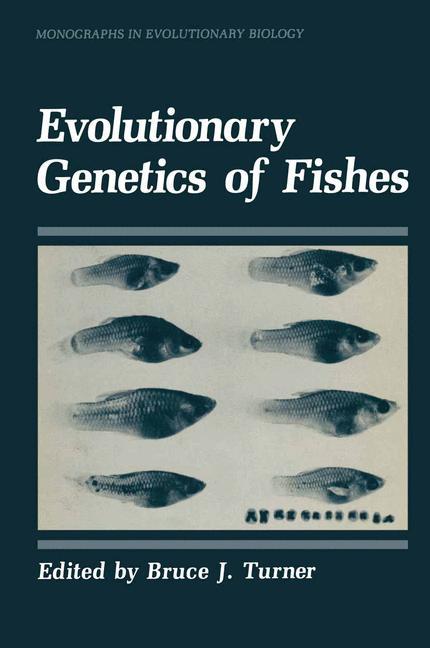
Zustellung: Di, 21.01. - Fr, 24.01.
Versand in 3 Tagen
VersandkostenfreiBestellen & in Filiale abholen:
It is my hope that this collection of reviews can be profitably read by all who are interested in evolutionary biology. However, I would like to specifically target it for two disparate groups of biologists seldom men tioned in the same sentence, classical ichthyologists and molecular biologists. Since classical times, and perhaps even before, ichthyologists have stood in awe at the tremendous diversity of fishes. The bulk of effort in the field has always been directed toward understanding this diversity, i. e. , extracting from it a coherent picture of evolutionary processes and lineages. This effort has, in turn, always been overwhelmingly based upon morphological comparisons. The practical advantages of such compari sons, especially the ease with which morphological data can be had from preserved museum specimens, are manifold. But considered objectively (outside its context of "tradition"), morphological analysis alone is a poor tool for probing evolutionary processes or elucidating relationships. The concepts of "relationship" and of "evolution" are inherently genetic ones, and the genetic bases of morphological traits are seldom known in detail and frequently unknown entirely. Earlier in this century, several workers, notably Gordon, Kosswig, Schmidt, and, in his salad years, Carl Hubbs, pioneered the application of genetic techniques and modes of reasoning to ichthyology. While certain that most contemporary ichth yologists are familiar with this body of work, I am almost equally certain that few of them regard it as pertinent to their own efforts.
Inhaltsverzeichnis
1 Tetraploidy and the Evolution of Salmonid Fishes. - 1. Introduction: Polyploidy in Vertebrate Evolution. - 2. The Salmonid Tetraploid Event. - 3. Evolution of Chromosomes. - 4. Evolution of Proteins. - 5. The Current Salmonid Genetic System. - 6. Adaptive Significance of Polyploidy in Salmonids. - 7. Summary. - References. - 2 Tetraploidy and the Evolution of the Catostomid Fishes. - 1. Introduction. - 2. Experimental and Theoretical Approaches. - 3. Pathways of Duplicate Gene Evolution. - 4. Population Genetics. - 5. Systematics. - 6. Speculations on Catostomid Evolution and Directions for Future Research. - References. - 3 A New Look at Sex Determination in Poeciliid Fishes. - 1. Introduction. - 2. Polygenic Sex Determination in Fishes. - 3. The H-Y Locus. - 4. Polygenic Sex Determination in Mammals. - 5. The Sex-Determining Mechanism of the Platyfish, Xiphophorus maculatus. - 6. The Sex Ratio in the Swordtail, Xiphophorus helleri. - 7. Do Swordtails Change Sex? . - 8. Taxonomy and the Induction of the Heterogametic Gonad by H-Y (H-W). - 9. Atypical Sex Determination in Fishes. - 10. The Relationship between Atypical Sex Determination, Sex Ratio, Age at Maturity, and Adult Size. - 11. Most Small Males of Xiphorphorus nigrensis (Río Choy) Are XX. - 12. The Frequency of the Autosomal Factors for Atypical Sex Determination in Natural Populations of Xiphophorus. - 13. The Effect of Extrinsic Factors on Sex Determination in Fishes. - 14. Sex Ratios and Sex Determination in Species Hybrids. - 15. The Sex-Determining System of Xiphophorus helleri. - 16. Summary. - Appendix. Sex Ratio Data for Various Xiphophorus Stocks. - References. - 4 Gene Mapping in Fishes and Other Vertebrates. - 1. Introduction. - 2. Linkage Relationships of Protein-Coding Loci in Fishes. - 3. Comparisons of Linkage Groups of Fishes withOther Vertebrates. - 4. Potential for Expansion of Linkage Maps in Fishes. - 5. Uses of Linkage Maps. - References. - 5 The Evolutionary Genetics of Xiphophorus. - 1. Introduction. - 2. Materials and Methods. - 3. Five Sets of Polymorphic Loci. - 4. Geographic Clines in Genetic Diversity. - 5. The Tailspot Hypothesis. - 6. New Support for the Tailspot Hypothesis. - 7. Maintenance of the Tailspot Polymorphism. - 8. Summary. - References. - 6 Apomictic Reproduction in the Amazon Molly, Poecilia formosa, and Its Triploid Hybrids. - 1. Introduction. - 2. Cytological Considerations. - 3. Concluding Remarks. - References. - 7 Evolutionary Ecology of Unisexual Fishes. - 1. Introduction. - 2. The Evolutionary Ecology of Parthenogenetic Vertebrates. - 3. The Adaptive Value in Being a Parthenogenetic Vertebrate. - 4. The Problem of Coexistence. - 5. Clonal Diversity. - References. - 8 The Evolution of Clonal Diversity in Poeciliopsis. - 1. Introduction. - 2. The Frozen Niche Variation Hypothesis. - 3. Mutations and Muller s Ratchet Mechanism. - 4. Recombination. - 5. Summary and Conclusions. - References. - 9 Evolutionary Phenetics and Genetics: The Threespine Stickback, Gasteroteus aculeatus, and Related Species. - 1. Introduction. - 2. Variable Features. - 3. Divergent Gasterosteus Populations. - 4. Parallelism. - 5. Evolutionary Rates. - 6. Conclusions 515 Appendix A. Measurement of Morphological Features in Gasterosteus aculeatus. - A1. Sampling. - A2. Fixation, Staining, and Preservation. - A3. Scoring Morphological Features. - Appendix B. Crossing and Rearing Gasterosteus aculeatus. - References. - 10 Population Genetics of North Atlantic Catadromous Eels (Anguilla). - 1. Introduction. - 2. Panmixia or Self-Maintaining Local Populations? . - 3. Panmixia with Strong Selection versus Local Populations. - 4. SexDetermination. - References. - 11 Allozymes of the Cyprinid Fishes: Variation and Application. - 1. Introduction. - 2. Methods. - 3. Genetic Variation. - 4. Applications. - 5. Recommendations for Future Research. - References. - 12 Descriptive Genetics of Cichlid Fishes. - 1. Introduction. - 2. Genome Size. - 3. Electrophoretic Characterization. - 4. Chromosomes. - 5. Sex Markers. - 6. Hybridization. - 7. Summary. - References.
Produktdetails
Erscheinungsdatum
12. Dezember 2012
Sprache
englisch
Auflage
Softcover reprint of the original 1st ed. 1984
Seitenanzahl
660
Reihe
Monographs in Evolutionary Biology
Herausgegeben von
Bruce Turner
Verlag/Hersteller
Produktart
kartoniert
Gewicht
940 g
Größe (L/B/H)
229/152/36 mm
Sonstiges
Paperback
ISBN
9781468446548
Entdecken Sie mehr
Bewertungen
0 Bewertungen
Es wurden noch keine Bewertungen abgegeben. Schreiben Sie die erste Bewertung zu "Evolutionary Genetics of Fishes" und helfen Sie damit anderen bei der Kaufentscheidung.










